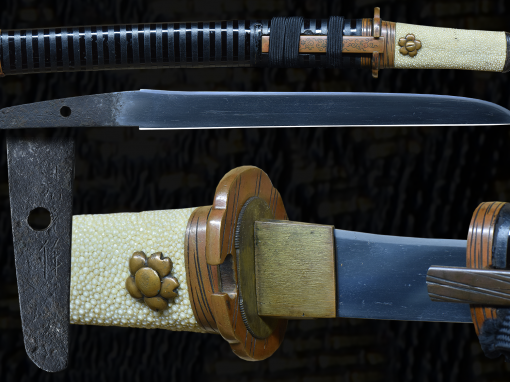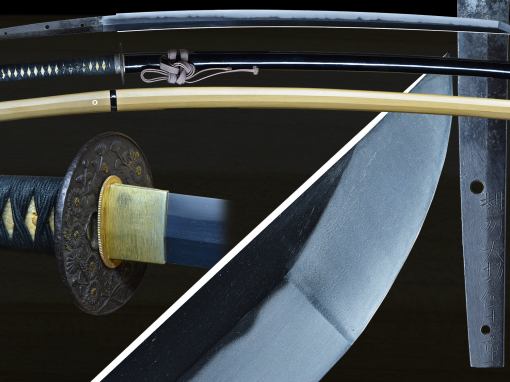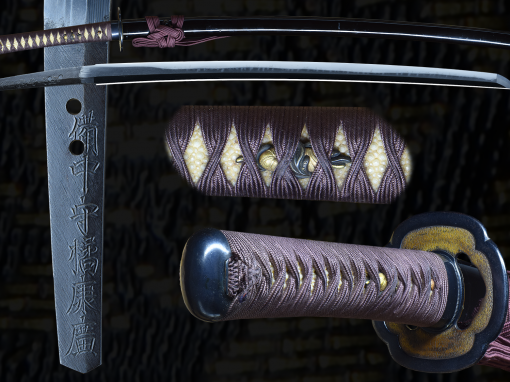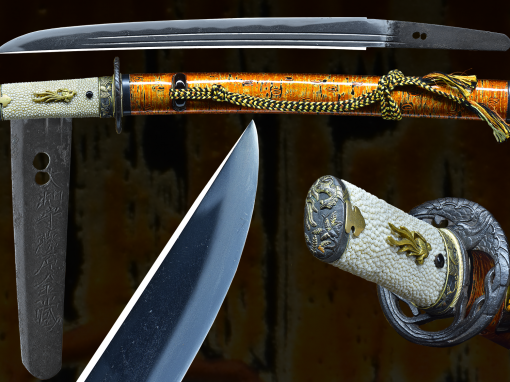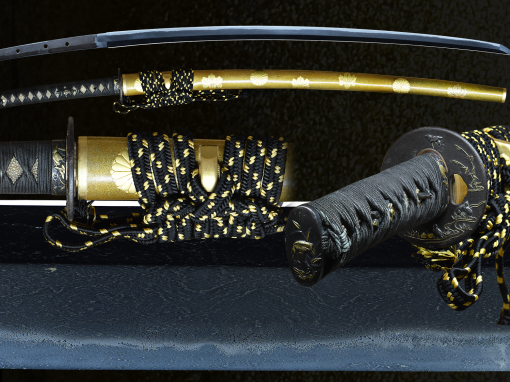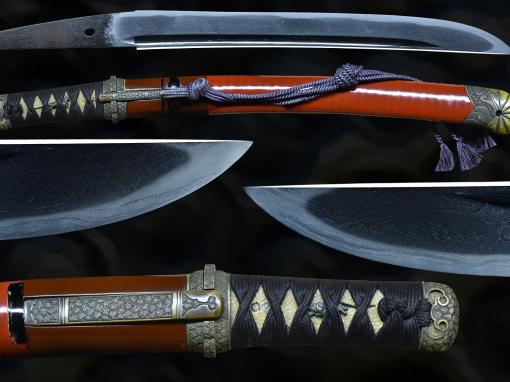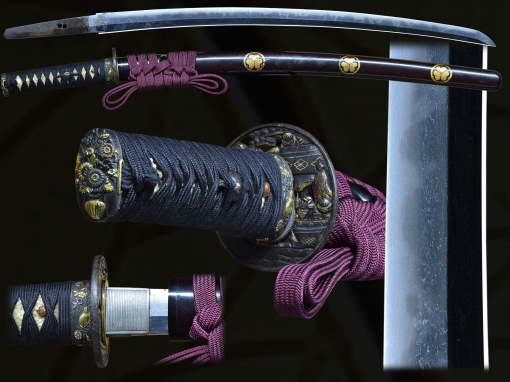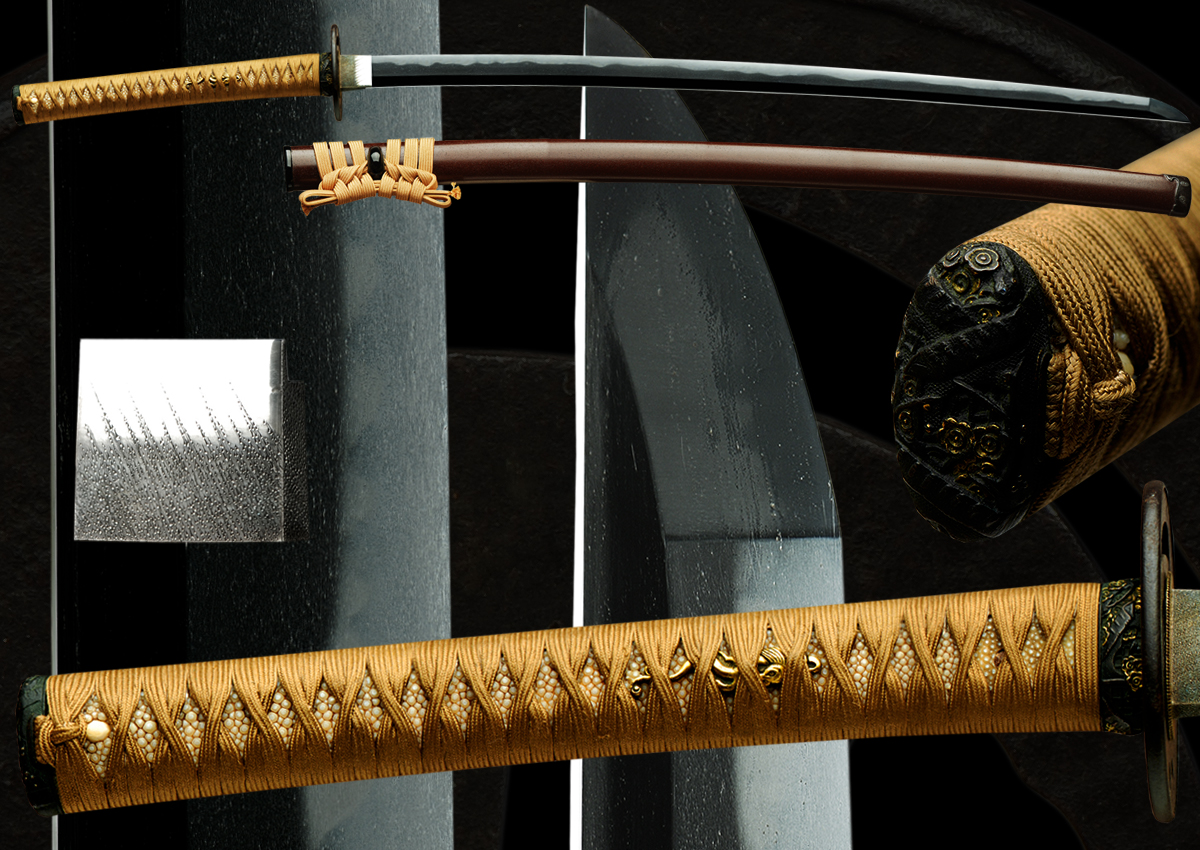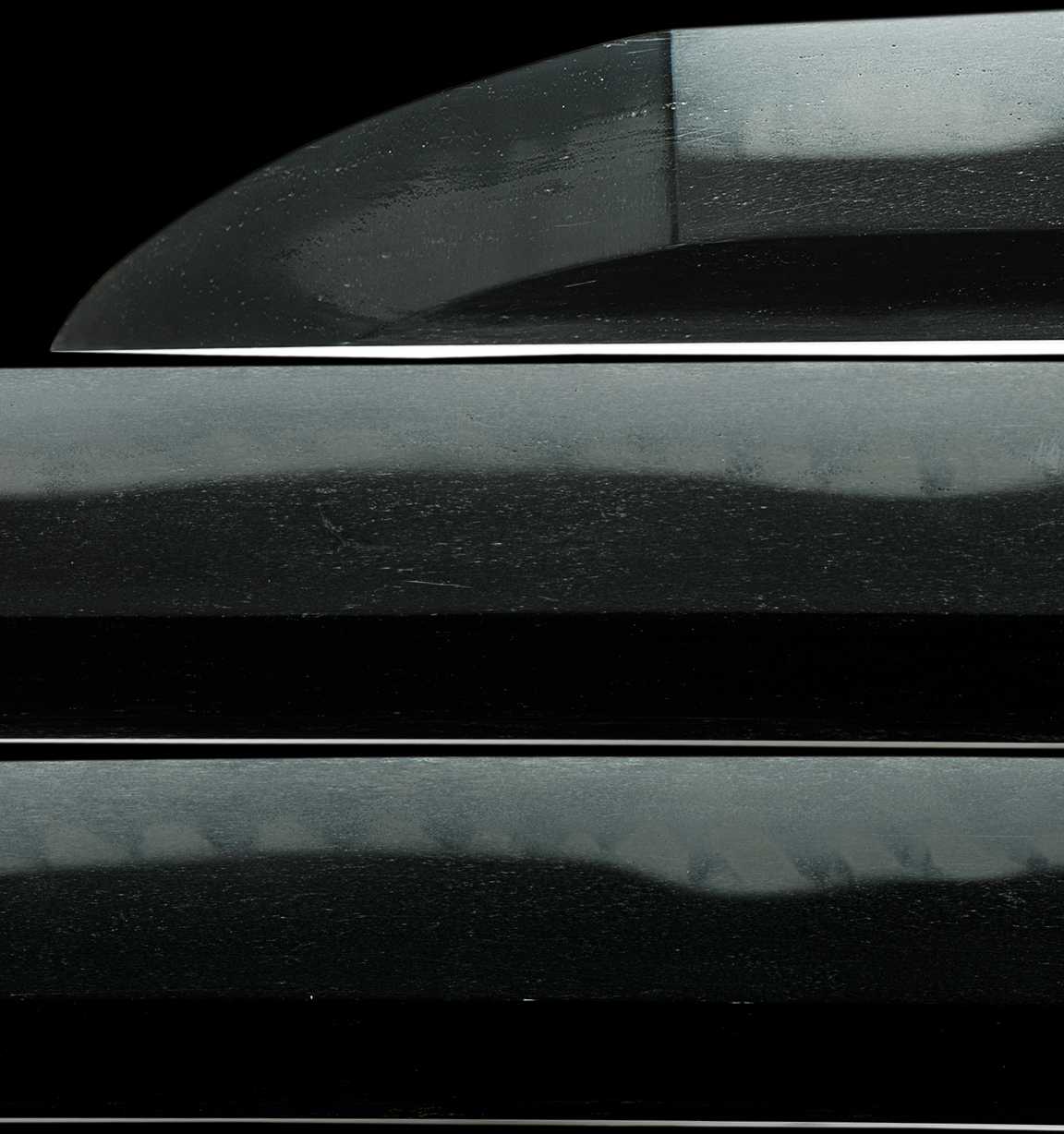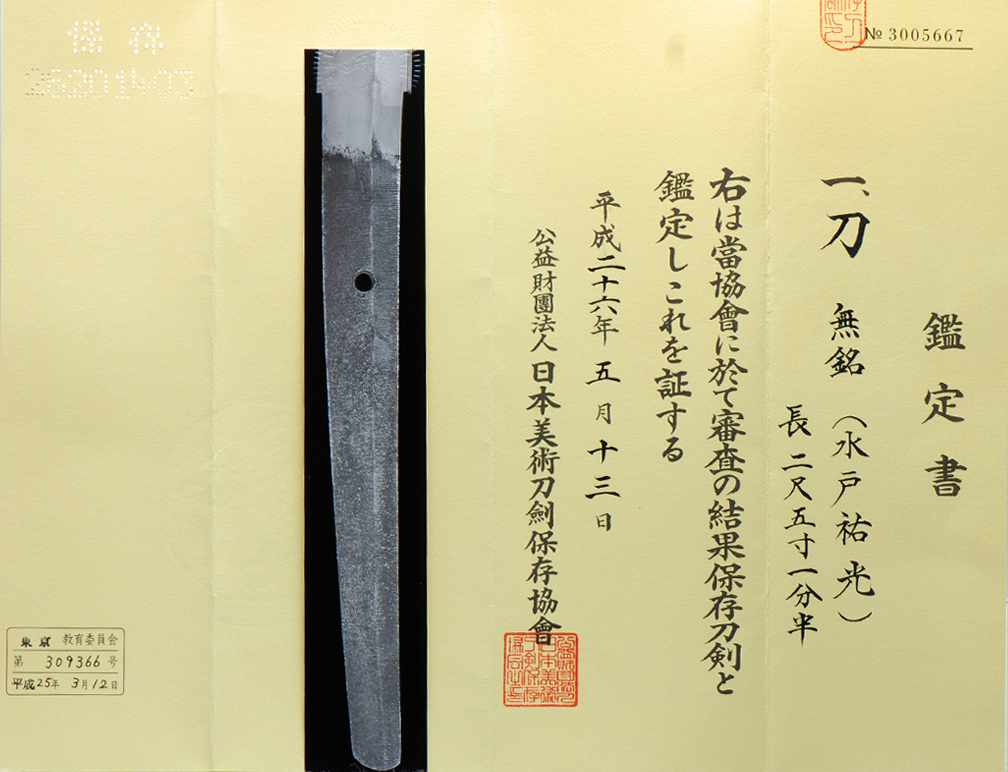This exceptionally long Yokoyama blade was forged by Sukemitsu and is very well made. The hamon is abundant with Hataraki/activaty and is beautiful as can be seen in the photo’s. Its nie based gunome midare mixed with ashi. There is active streaks of sunagashi and kinsuji throughout the blade. It also has very nice mune yaki. The hada is tightly forged in itame and has a rich appearance with much jinie. The shape of the sword is very elegant and well balanced. The Yokohama swordsmiths were very famous and respected for there work. This fine sword comes with original mounts that are of very good quality. The scabbard/saya is very sound and has no damages. The overall look of the mounts adds greatly to this swords value. Papered by the NBTHK attesting to the smith, age and quality of this blade. A complete sword mounted, polished and papered.
An excerpt from an article by Craig Bird:
” Shinto and Shin-Shinto Yokoyama School
The Shinto Yokoyama-den was founded by the Osafune school smith Kozuke Daijo Sukesada who made blades with a distinct and rich choji pattern. Next to Kozuke Daijo, the best known Yokoyama kaji is Yokoyama Sukenaga (circa Tenpo). This school made blades of nioi hamon reminiscent of Koto times relying on many varieties of choji. These blades display koshi-hiraki midare, gunome, tight nioi-guchi, sunagashi and kinsuji. Other Shinto and Shin-Shinto era kaji also used the Bizen choji as trademark for their work. Such smiths included Naka Kawachi Kunisuke, Ishido-den, Taikei Naotane, as well as many others. The Shin-Shinto Yokoyama school is best known for the exact nature of its choji-midare, as most Shin-Shinto kaji show a hamon pattern which is restrained and overly conscious.
Yokoyama Characteristics
Yokoyama Kozuke Daijo Sukesada:
Hamon of a wide and complex choji, koshihiraki-midare; ashi and yo are seen with overall fine ko-nie.
Yokoyama Sukenaga:
Hamon of gunome-choji-midare with juka-choji, ashi, yo and sunagashi being present; koshihiraki-midare is also seen.”
The Bizen tradition of swordsmithing is one of the longest and most successful line of smiths in Japanese Sword history, starting with the smith Tomonari in the 10th century AD.
The Swordsmith:
SUKEMITSU (祐光), Ansei (安政, 1854-1860), Hitachi – “Suifu ni oite Yokoyama Sukemitsu saku” (於水府横山祐光作), “Mito-jū Sukemitsu kore o tsukuru” (水戸住祐光造之), “Suifu-jū Yokoyama Fujiwara Sukemitsu saku” (水府住横山藤原祐光作), real name Yokoyama Kajūrō (横山嘉十郎, the first name can also read Yoshijūrō), he is also listed with the first name Kijūrō (喜十郎), he was born in the third year of Bunsei (文政, 1820) as third son of a certain Taguchi Gon´emon (田口権右衛門) in Edo, there he studied under a not further specified Yokoya smith and was allowed the use the family name Yokoyama (横山), in the second year of Kaei (嘉永, 1849) he was employed by the Mito fief (水戸藩) by recommendation of Norikatsu (徳勝) and received a stipend for the support of seven persons, he died on the 13th day of the seventh month Meiji six (明治, 1873) in his house in Mito´s Hachiman (八幡) at the age of 54. His hamon was in suguha, gunome-midare and is achūjō-saku level smith.
- Mei: Mumei
- Date: Edo (1800’s)
- Nagasa: 30 inches
- Sori: 1.3 cm
- Width at the ha-machi: 3.03 cm
- Width at the yokote: 1.97 cm
- Thickness at the mune-machi: 0.85 cm
- Construction: Shinogi zukuri
- Mune: Iori
- Nakago: Ubu
- Kitae: Itame
- Hamon: Midare Gunome
- Boshi: Maru
- Condition: Good polish
Email us if your interested in this item and remember to include the order number for this item: fss-730.
kantei-sho (鑑定書)
No 3005667
katana, mumei: Mito Sukemitsu (水戸祐光)
nagasa 2 shaku 5 sun 1 bu han
Migi wa tô-kyôkai ni oite shinsa no kekka, hozon-tôken to kantei-shi kore o shô-suru.
(右は當協會に於て審査の結果保存刀剣と鑑定しこれを証する)
Heisei nijûrokunen gogatsu jûsannichi (平成二十六年五月十三日)
kôeki-zaidan-hôjin (公益財團法人): Nihon Bijutsu Tôken Hozon Kyôkai (日本美術刀劍保存協會)
Appraisal
katana, unsigned: Mito Sukemitsu
nagasa ~ 76.2 cm
According to the result of the shinsa committee of our society we judged this work as authentic and designate it as hozon-tôken.
May 13th 2014
[Foundation] NBTHK
For Sale
